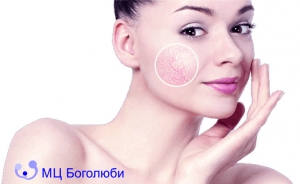We all heard about different types of skin and more than once - normal, oil, dry, mixed. But there is also a complicated condition of mixed or oily skin, in which, despite the dry surface, flaws appear on it that change the uniformity of the skin relief. Such skin is called asphyxiation.
Asphytic skin does not fall under the classification of ordinary skin types and is, in fact, dermatosis. This condition should be considered rather as a pathological reaction of the body, which can be caused by numerous factors.
Symptoms
As the name implies, asphyxiation skin is skin that «does not breathe». From an aesthetic point of view, such a skin surface looks dull, grayish or yellowish, with separate oily areas. Thickening of the stratum corneum and hypersecretion of the sebaceous glands is noted. This predisposes to the appearance of defects such as:
- comedones;
- boils;
- microcysts.
In addition, enlarged pores are present, especially on the forehead, cheeks, and nose.
Causes
The problem of asphyxial skin depends mainly on the overproduction of dense wax sebum and the use of cosmetics that are not suitable for the patient’s skin type, for example, moisturizing or nourishing creams with a rich formula and too aggressive cleansers. (In fact, mixed or oily skin already produces a sufficient amount of sebum and does not require additional oily cosmetic products.) This prevents the skin from “breathing” normally, it is dehydrated, peeling, and excess impurities are collected in the pores.
Asphytic skin is often found in adolescence, especially in girls. In fact, during this period, the body undergoes significant and numerous changes that negatively affect the problem.
Asphytic skin can also be associated with disorders of the gastrointestinal tract, such as poor digestion, malabsorption, constipation, diarrhea. Finally, improper eating habits, a limited supply of nutrients, vitamins and minerals can further aggravate the condition.
Hygiene and asphyxial skin
therapy Asphyxial skin care requires certain daily hygiene practices and targeted dermocosmetic procedures to help alleviate existing imperfections and prevent the problem. To cleanse the face, non-aggressive detergents should be used daily, which remove makeup residues, taking only part of the surface sebum. These products are applied with gentle massaging movements and then thoroughly washed off.
A good effect is obtained by using a cleansing milk instead of soap, which eliminates oily skin, and then use a tonic based on astringent and soothing botanical extracts that form a biofilm.
Once a week, it is recommended to use mild exfoliants in order to more deeply cleanse asphyxiation skin from sebum and keratin residues that clog pores. As for hydration, the skin should be treated with cosmetics free of fats, silicones and paraffin.
Faced with the problem of asphyxial skin, it makes sense to contact a dermatologist at the Bogoliuby MC for a consultation. Perhaps you will be shown, depending on the condition, peels on an outpatient basis and some targeted treatments for home use, for example, based on salicylic acid and lipohydroxyacids (LHA), with a superficial cleansing and microreflective effect. These active ingredients are also useful in reducing visible defects.
It is important to correct your dietary habits. A varied and balanced diet must be followed. Useful products for patients with asphyxic skin - fresh vegetables and fruits, fish, rice and nuts, rich in vitamin B and omega 3-6-9 acids. In addition to these measures, it is possible to use specific nutritional supplements as recommended by your doctor.

















